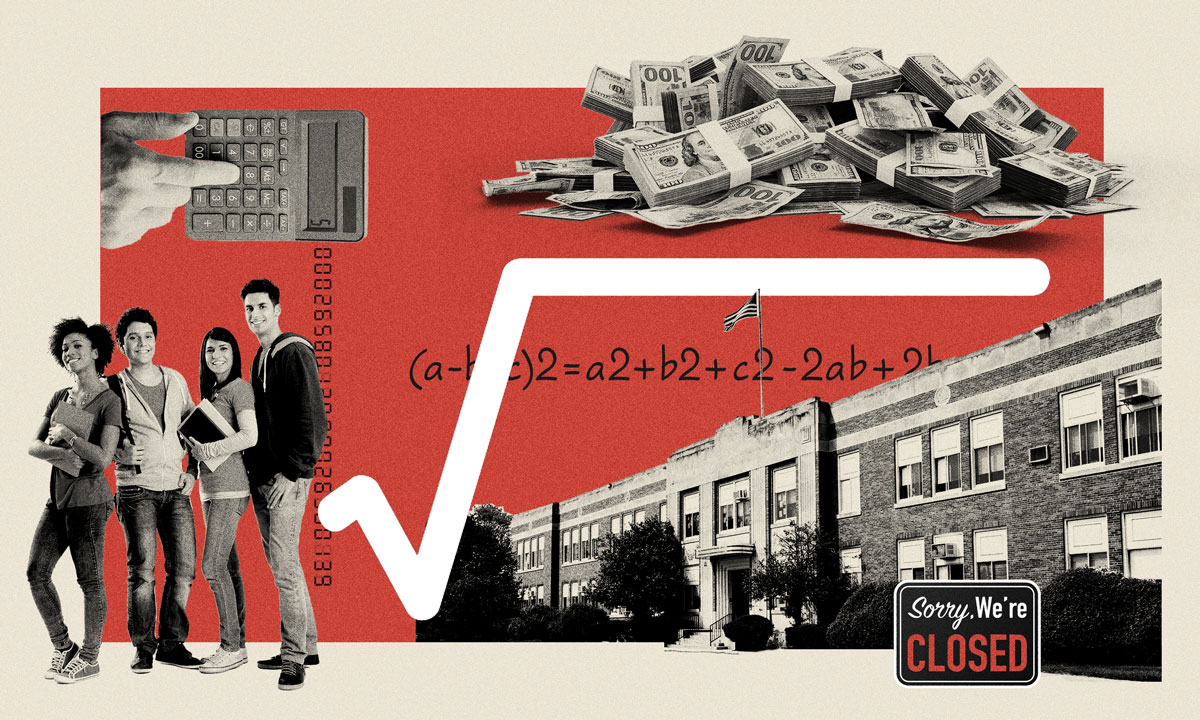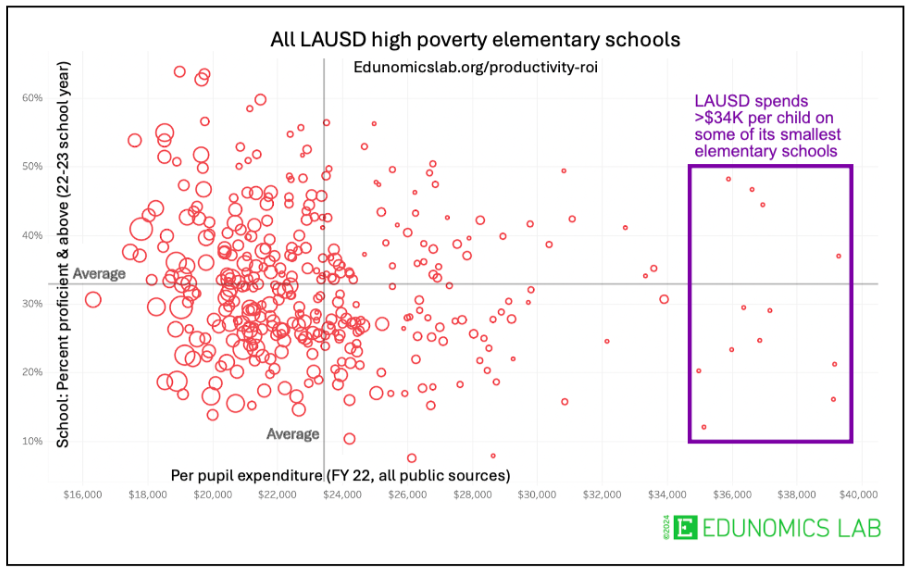The Math of School Closures: How District Leaders Should Navigate the Perfect Storm of Budget Shortfalls & Declining Student Enrollment
Analysis: Closure decisions are never easy, but leaders’ responsibility is to be good stewards of public funds and ensure all students are served well

Get stories like these delivered straight to your inbox. Sign up for The 74 Newsletter
It makes intuitive sense: Smaller districts with fewer kids need fewer schools. A district with 40,000 students operates many more school buildings than a district with 20,000, which in turn runs more than a district with 10,000. With widespread enrollment declines (for example, California’s school-age population is forecast to drop by 15% over the next decade), many districts are now grappling with whether to close one or more schools.
What’s the forcing factor for school closure decisions? Money, of course.
District revenues, for the most part, are tied to the number of students a district serves. Enrollment has fallen in many districts, but during the last three or four years, federal pandemic dollars more than made up for the reductions in funding associated with those declines. Many districts have had plenty of cash on hand to keep running a fleet of under-enrolled schools. But federal relief dollars will dry up this fall, and it’s increasingly unlikely that the state will fill the gaps. That’s prompting shrinking districts to grapple with whether they can still afford to operate all their schools.
Mostly what a district saves when closing a school is in staffing costs. Closing three schools can save the costs of three principals, three librarians, three nurses, and so on, and even some teaching positions where students can fill empty seats elsewhere in the district.
At Edunomics Lab, our rule of thumb is that when a district has under-enrolled schools, closing 1 of every 15 schools saves about 4% of a district’s budget, mostly in labor costs. There may also be nominal savings in facilities, but labor is far and away the largest portion (85-95%) of the budget, and savings there will be more consequential over the long term.
But not every closure brings layoffs. Where are the savings if the district isn’t issuing pink slips?
Typically, the savings come from downsizing the district’s overall staffing counts with attrition. Often, the district can move staff from the closing school to fill vacancies emerging in other schools as staff leave on their own (thus avoiding layoffs). When a principal retires in one school, the district may move a principal from the closing school over to fill that spot. The cost reduction comes from not rehiring to fill those vacancies. If the leaders choose instead to keep all schools open, then the district has little choice but to rehire to fill each departing principal, nurse, librarian and so on to keep the larger number of schools running.
Maintaining under-enrolled schools drains funds from all the district’s schools, not just the under-enrolled ones. Each district operates on a fixed revenue pool. Spending on principals, librarians and nurses in one or more half-empty schools means spending less on something else. It’s like having a fixed amount of frosting while trying to cover too many cupcakes. In the end, all the cupcakes end up with less frosting. For schools, that means they’ll start to see cutbacks to music, electives, AP courses, athletics and other supports as the district uses its limited funds to prop up the under-enrolled campuses.
Take the Los Angeles Unified School District, for example, where the district spends an average of about $23,000 per elementary student at each of its higher-poverty schools. As the graph below shows, a few of its tiniest schools are drawing down over $34,000 per student from LAUSD’s fixed pool of funds. The higher price tag means less cash available for all the other schools in the district. (This information is available for all districts here.)

Of course, closure decisions shouldn’t focus on money alone. For instance, districts may consider whether there are other nearby schools for displaced students to attend. Also relevant is whether the school is effective in its core mission. In the graphic above, some of the higher-priced under-enrolled schools are below the average performance line for higher-poverty schools. Not only are these schools expensive, but it also matters if that money isn’t delivering value for students.
It’s also important to remember that not every small school has an outsize price tag. If a small school is able to operate cost-efficiently (meaning it has the same per-pupil costs as other similar schools), then closing it won’t likely save much at all. For a small school to be cost-efficient, it probably isn’t staffed in the same way as other schools. Maybe the principal also teaches a class, or the counselor is also the Spanish teacher. Or maybe the school uses some online options for electives or it operates as a multi-age Montessori model, or something else. And if it is demonstrating higher results for kids (meaning it is in that upper left quadrant on the graph), there’s even more of a case to leave it alone. What’s relevant here is that the small school isn’t draining funds from other schools, and is providing good value for the dollar.
School closure decisions are never easy for any community, regardless of what the numbers say. But it’s the leaders’ responsibility to be good stewards of funds and ensure all students are served well. Assessing which schools are most able to leverage their money to maximize student outcomes can help leaders bring transparency to that difficult process.
This analysis originally appeared at EdSource.org.
Get stories like these delivered straight to your inbox. Sign up for The 74 Newsletter



